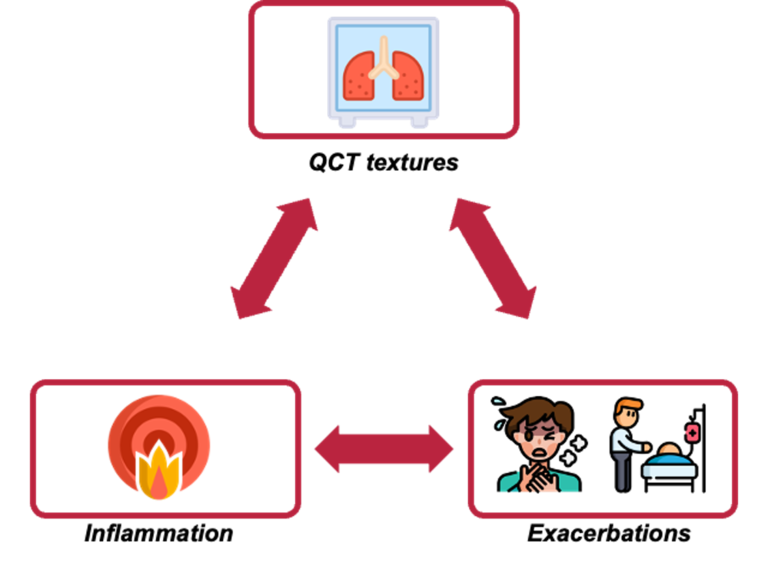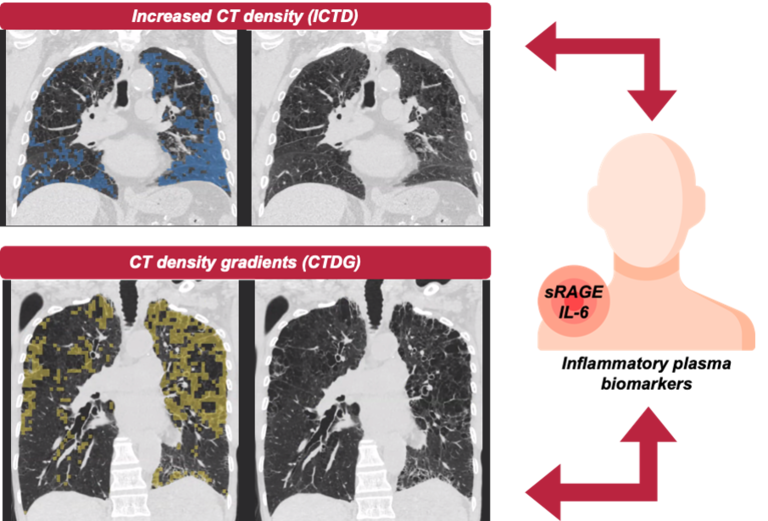Breadcrumb
Novel QCT textures are associated with sRAGE and IL-6 in SPIROMICS
Recent work by Chaudhary et al. (2022) demonstrated value of Quantitative computed tomography (QCT) density-gradient textures in predicting future COPD exacerbation risk in Subpopulations and Intermediate Outcome Measures in COPD Study (SPIROMICS) cohort. In the light of this finding and visual inspection of the CT volumes, chest radiologists and pulmonologists speculated that these textures can be indicators of inflammation. This motivated us to bridge the gap between well-known inflammation markers like sRAGE and IL-6, and these texture features. The usage of these particular plasma biomarkers was justified using studies from E. Bradford et al. (2017) and K. A. Pratte et al. (2021) that have studied the correlation of these specific biomarkers with other QCT based biomarkers like emphysema and airflow obstruction.

In the future, we would like to validate these findings in additional cohorts including COPD Genetic Epidemiology study (COPDGene). Once the associations between the inflammatory plasma biomarkers and texture features is established, we would like to expand our study to analyze if these inflammatory biomarkers can serve as predictors for future COPD exacerbations.
Quantitative computed tomography (QCT) has been used to understand and characterize various lung pathologies. Two novel QCT textures, increased CT density (ICTD) and CT density gradients (CTDG), identified using adaptive multiple feature method (AMFM) (Salisbury et al. (2017)) were demonstrated to be predictive of future exacerbations of chronic obstructive pulmonary disease (COPD). Interestingly, these textures surrounded the bronchovascular bundles and lobar fissures and could possibly be indicators underlying inflammation.

We sought to investigate relationships between such structural QCT phenotypes and underlying plasma biomarkers. Inflammatory blood markers such as soluble receptor for advanced glycation end products (sRAGE) has been linked to emphysema and airflow obstruction and interleukin (IL)-6 has been linked to airflow obstruction and its progression, and emphysema progression over 5 years. We hypothesized that these QCT-based lung parenchymal textures are associated with sRAGE and IL–6 and can be an indication of inflammation.
For more information, please contact Hira Anees Awan.